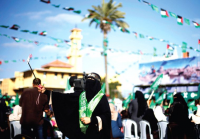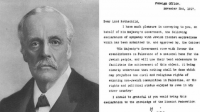
Links
Sheba Medical Centre
Melanie Phillips
Shariah Finance Watch
Australian Islamist Monitor - MultiFaith
West Australian Friends of Israel
Why Israel is at war
Lozowick Blog
NeoZionoid The NeoZionoiZeoN blog
Blank pages of the age
Silent Runnings
Jewish Issues watchdog
Discover more about Israel advocacy
Zionists the creation of Israel
Dissecting the Left
Paula says
Perspectives on Israel - Zionists
Zionism & Israel Information Center
Zionism educational seminars
Christian dhimmitude
Forum on Mideast
Israel Blog - documents terror war against Israelis
Zionism on the web
RECOMMENDED: newsback News discussion community
RSS Feed software from CarP
International law, Arab-Israeli conflict
Think-Israel
The Big Lies
Shmloozing with terrorists
IDF ON YOUTUBE
Israel's contributions to the world
MEMRI
Mark Durie Blog
The latest good news from Israel...new inventions, cures, advances.
support defenders of Israel
The Gaza War 2014
The 2014 Gaza Conflict Factual and Legal Aspects
To get maximum benefit from the ICJS website Register now. Select the topics which interest you.
ISRAEL, THE MEDIA AND THE DISENGAGEMENT FROM GAZA
The anticipated confrontations between militant settlers and the security forces and footage of people – especially children -- being dragged from their homes pose serious public relations problems for Israel. This problem will only be exacerbated by scenes of bulldozers then leveling what remains of the settlements and leaving mountains of rubble behind.
Furthermore, both Islamic Jihad and Hamas clearly intend to make it look as though Israel is withdrawing with its tail between its legs and will further intensity their ongoing efforts to ensure that the withdrawal process is accompanied by a hail of rockets and mortars. The requirements of deterrence oblige Israel to avoid being perceived as withdrawing out of weakness lest its unilateral decision be interpreted as "a victory for terror," and the way it responds may also generate some highly negative coverage.
Based on its experience from the first three years of the intifada, Israeli media strategy to deal with these challenges will logically be built on the following assumptions and guidelines:
It is impossible to hide from the camera. Operating areas can be declared closed military zones but that does not mean that cameras will not be there. Dozens, if not hundreds, of foreign journalists have already established bureaus in Gush Katif in Gaza. They are equipped with satellite communications of their own and they have also handed out hundreds of camera-capable cellular phones to both settlers and Palestinians in order to transmit the images in case the mainstream press is somehow cut off from the picture. With this in mind, Israel will instead have to focus on directly communicating its own message with sufficient frequency, cogency and credibility to ensure that it is not overwhelmed by scenes from the field. One of the primary images the world will see is that of Israeli fighting Israeli. Even if firearms are not used, the image may at times resemble that of a country on the verge of civil war. To counteract this, the government will need to project its authority by conveying at all times a message of systematic planning and orderly implementation. It will want to communicate compassion for those settlers losing their homes while simultaneously portraying those who resort to violence as a vocal but small minority. Surveys will probably be published, perhaps daily, to show that the vast majority of Israelis as well as many of the settlers themselves have come to terms with the decision. It will be stressed that any decision to dismantle facilities was a response to Palestinian insistence that the existing settlement infrastructure, which in Gaza houses only about 8-9000 people, is not a cost effective use of land in one of the most densely populated places on earth. Israel will also stress that the rubble resulting from the destruction of the homes could be effectively used in the building of the Gaza port. In any case, Israel will try to explain the context and make sure that the destruction of the settlements is not seen as an act of wanton vindictiveness. The general thrust will be cooperative rather than confrontational, based on the need to keep the media fully in the picture all the times in order to allow them to add context to their reports. Specific measures may include pre-disengagement tours of the new settlements that have been prepared for those being evacuated and daily briefings for foreign journalists by the head of the disengagement administration or appropriate other government officials and heads of the security services, including the police. If Israel does have to strike against the Islamic Jihad and Hamas, it will provide regular press briefings, and if the operation is mainly on the ground, foreign and Israeli journalists may well be embedded with the forces in order to prevent a repetition of previous situations in which journalists had to rely, at least initially, on second-hand and highly distorted accounts. In light of almost inevitable instances of confusion and disorder, Israel will emphasize that it has tried to coordinate the withdrawal with the Palestinians but that the lack of a strong central Palestinian Authority capable of reining in extremists has precluded an orderly handover of the areas to be evacuated. It will also stress that its own actions are driven by security needs rather than by any desire to undermine the authority of Mahmoud Abbas. The underlying thrust of Israel’s media policy with respect to the disengagement will logically be to avoid a repetition of the mistakes made in the past, especially during the first three years of the intifada, when a lack of cooperation among various public information agencies (especially the Army Spokesman’s Office and the Foreign Ministry) and the mishandling of incidents like the Karine-A arms smuggling ship, the alleged "massacre" in Jenin and the targeted assassination of Hamas leader Sheikh Ahmed Yassin caused significant damage to Israel’s image in the world. The Government has since created a mechanism with the technical and organizational capacity to articulate and disseminate its narrative more effectively in the face of what is certain to be a difficult media challenge. How that mechanism actually performs will soon be put to the test.
Tel Aviv Notes is published by
TEL AVIV UNIVERSITY
The Jaffee Center for Strategic Studies www.tau.ac.il/jcss/
& The Moshe Dayan Center for Middle Eastern and African Studies http://www.dayan.org/
through the generosity of Sari and Israel Roizman, Philadelphia
# reads: 208Original piece is http://www.accessmiddleeast.org/index.aspx





















